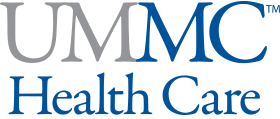
Information About Esophageal Conditions
Screening for Barrett's Esophagus
For patients who meet clinical criteria, we offer a noninvasive screening for Barrett’s esophagus, which is a precancerous condition in the cells lining the esophagus. The screening detects a type of esophageal cancer in its earliest stages, giving patients better treatment options.
If you or your primary care provider feel you are at risk for Barrett’s esophagus or esophageal cancer, then you may qualify for screening. It takes only five minutes, and it doesn’t require incisions or sedation. It is a simple test performed in our clinic. In many cases, the screening can be performed during your initial clinic visit.
People who should be screened include those who have been diagnosed with GERD or have symptoms of GERD and/or two or more of the following risk factors:
- Age 50 or older
- Male
- White
- Smoker
- Obese
- Family history of Barrett’s esophagus
- Family history of esophageal cancer
How it works
The screening involves swallowing a small capsule called EsoCheck with Collect+Protect™ Technology. About the size of a vitamin pill, the capsule contains a small inflatable balloon attached to a thin catheter.
Before beginning the screening, your doctor will confirm you have not eaten any solid foods within the last two hours. The screening has four steps:
- Swallowing the capsule
Your doctor will place the capsule at the back of your mouth for you to swallow. He may ask you to take sips of water to help advance the capsule to your stomach. In clinical testing, most patients found the capsule easy to swallow. - Collecting cell samples
Once the capsule is in the correct position, your doctor will briefly inflate the balloon to swab the lining of your lower esophagus. This collects cell samples in the area where any abnormal cells may be found. - Removing the capsule
After the doctor has finished the swab and collecting cell samples, he will deflate the balloon, gently pull the capsule back and remove it from your mouth. The capsule protects the cell samples as it is retrieved through your esophagus and throat. - Preparing the cells for laboratory testing
After the doctor retrieves the capsule, he will place it into a container with preservative solution to be sent to the lab for analysis. Lab testing examines individual DNA molecules for the presence or absence of substances that indicate Barrett’s esophagus. The test has an accuracy rate higher than 90%.
After you have completed the screening, within a few weeks you will get a call from our office notifying you of your test results and next steps.
Is the screening covered by insurance?
Lucid Diagnostics©, the company that processes the screening, accepts all commercial insurance, Medicare and Medicaid. For commercial insurance, it is considered out of network. This is typical for newer technologies and tests. Always check your specific insurance policy to find out what is covered and what, if any, precertification may be required.


